Lubricating Oil - Densities vs. Temperature
Variations in lubricating oil density as function of temperatur, together with volume correction factors.
Correlations for lubricating oil density and temperature are calculated by use of tools based on ASTM D 1250-04 and IP 200/04 (API Manual of Petroleum Measurement Standards, Chapter 11- physical properties Data, Section 1:Temperature and pressure volume correction factors for generalised crude oils, refined products and lubricating oils). Each colored line represents a lubricate with a given density at a given temperature. If the temperature changes, the density of the lubricate changes along the colored line.
Examples of the use of the figures are given below the figures.
If you have the lubricating oil density given in °API, use the API-to-gravity converter.
See also similar correlations for fuel oil, crude oil and jet fuel.
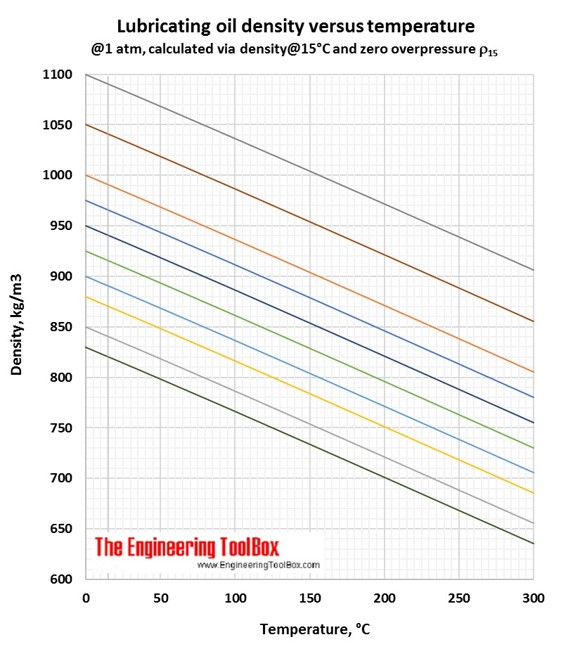
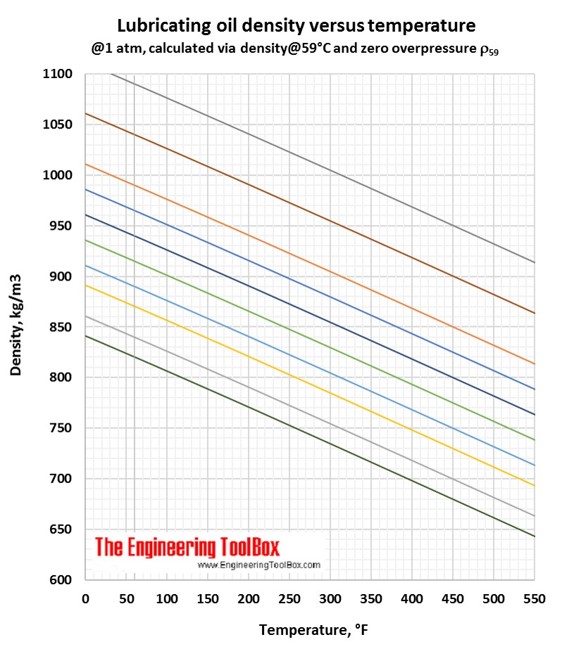
Volume correction factors can be used to calculate the volume of a product at base temperature (15°C/59°F) if you know the density and volume at another temperature. Or, if you know the base volume and density, you can use the volume correction factor to calculate the volume at another temperature. To be sure you have used the correct figure for correction factors, the easy rule is that the volume increases with increasing temperature.
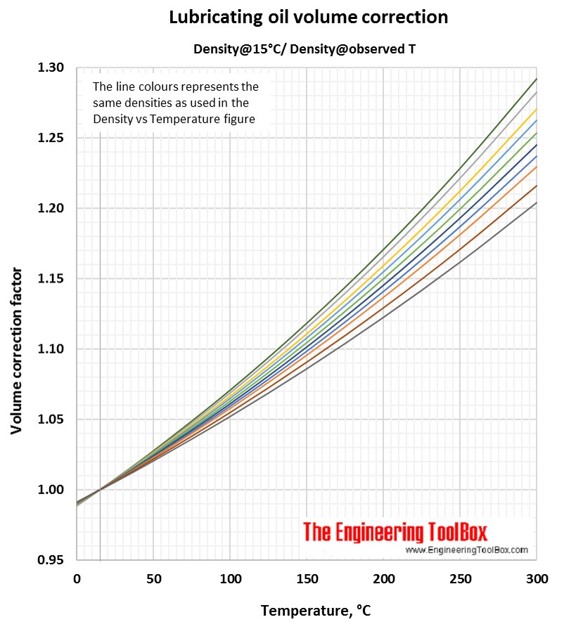
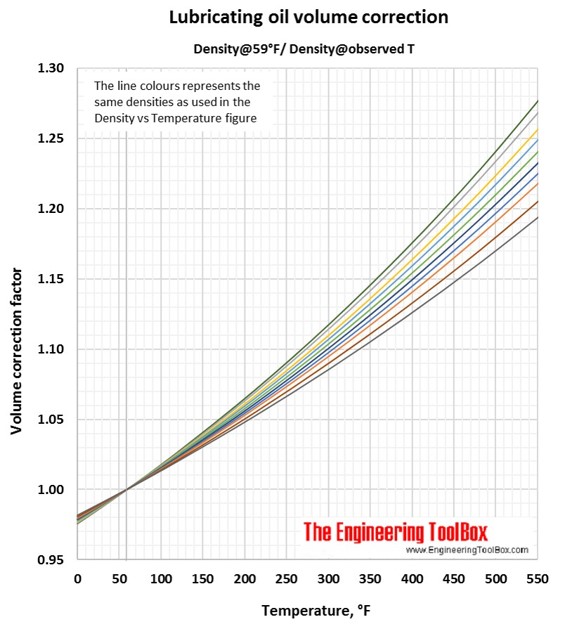 l
l
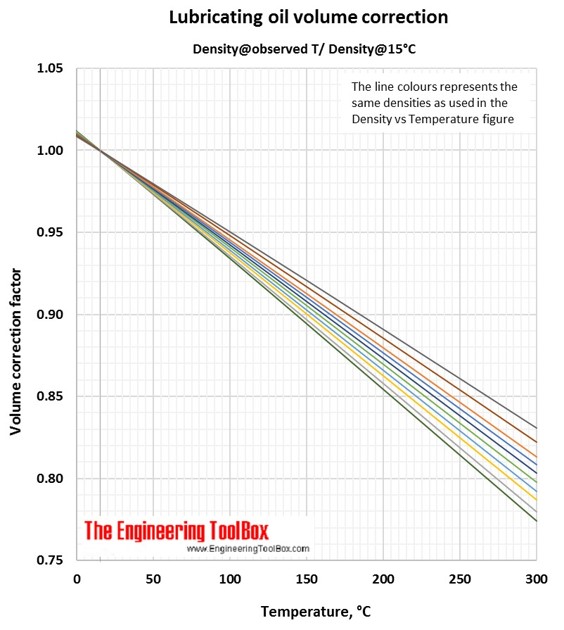
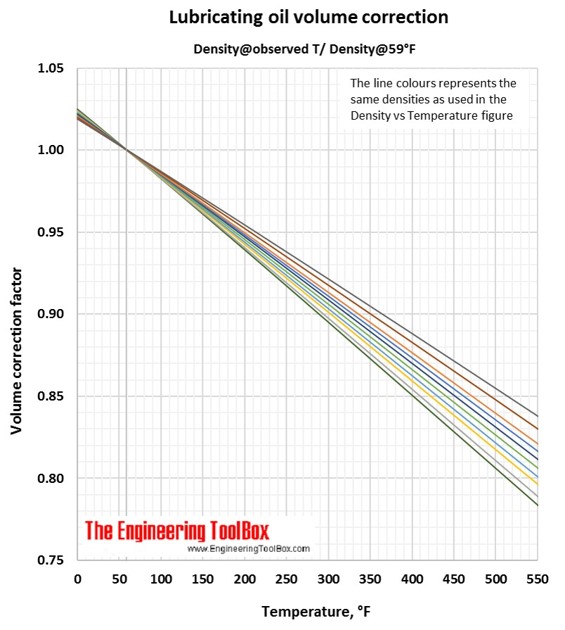
1.
You have 100 liters of a lubricating oil with a density of 954 kg/m3 at 150°C. What is the volume at 15°C?
In the Density vs temperature figure(°C), you see that the brown line represent this lubricating oil.
Then, use the brown line in the Lubricating oil volume correction figure (Density@observed T/Density@15°C). At 150°C the correction factor is 1.09.
The volume of your lubricating oil at 15°C is 100 liters / 1.09 = 92 liters. (Easy check: Lowest volume at the lowest temperature)
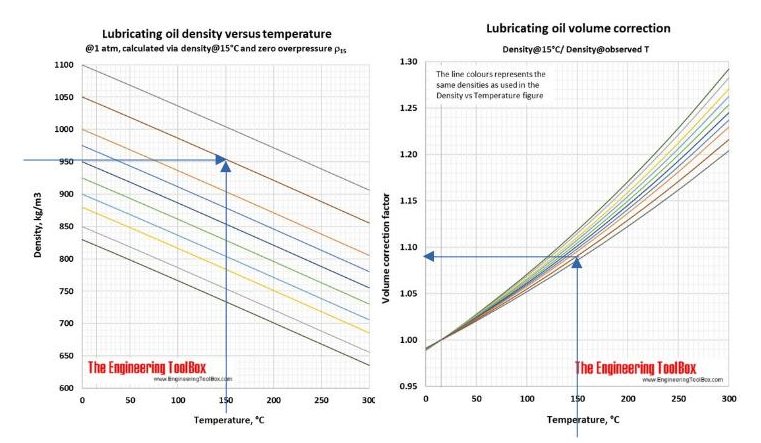
2.
You have 10 m3 of a lubricating oil with a density of 941 kg/m3 at 15°C. How will the volume change if you heat it to 200°C?
In the Density vs temperature figure (°C), you see that the dark blue line represent this lubricating oil.
Then, use the dark blue line in the Lubricating oils volume correction figure (Density@15°C/Density@observed T). At 200°C the correction factor is 1.145.
The volume of your lubricating oil at 200°C is 10m3 *1.145 = 11.45 m3. (Easy check: Lowest volume at the lowest temperature)



